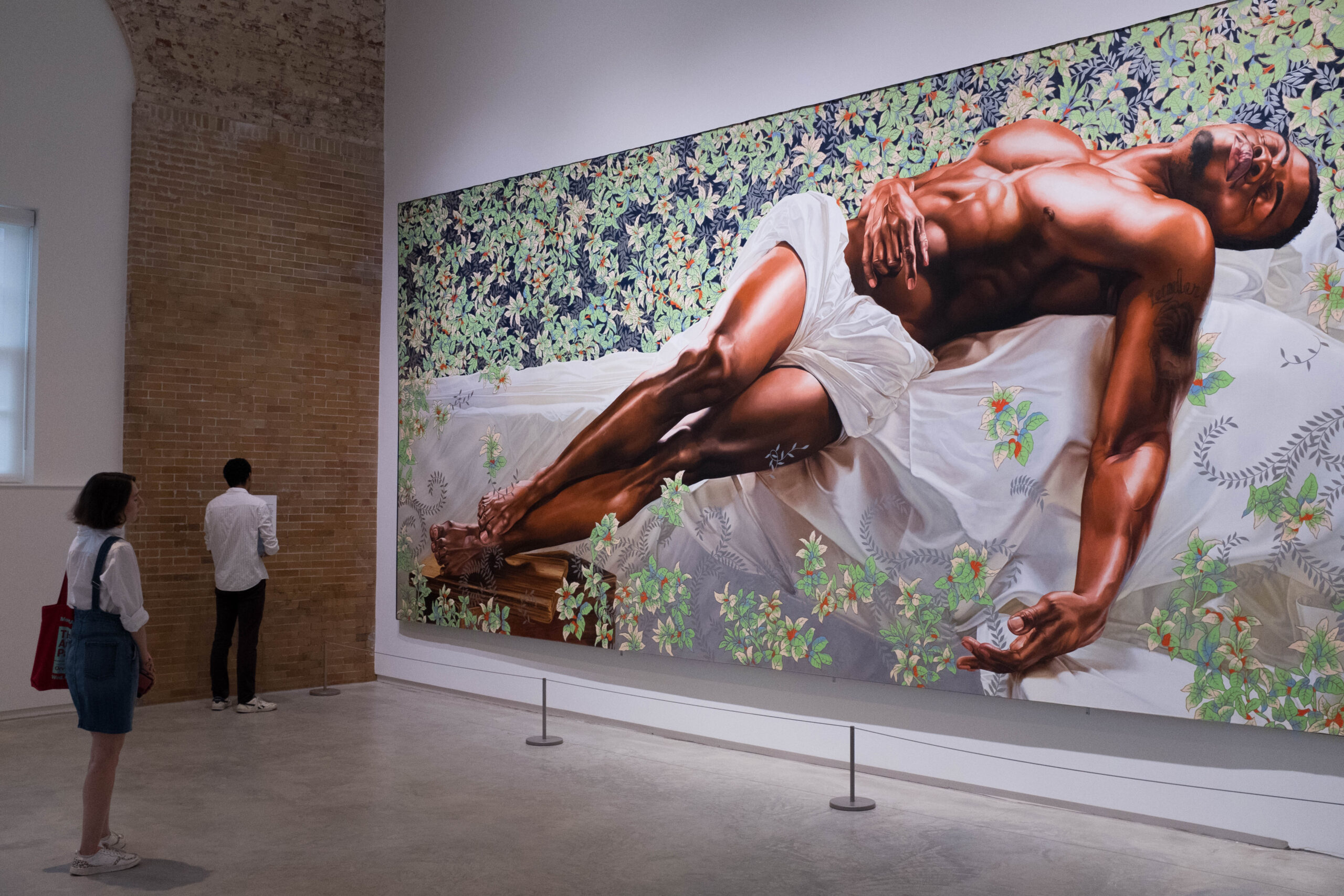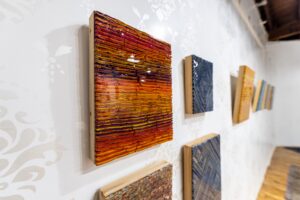Behind a sleek glass facade, the Rubell Museum opens up into a 4,000-square-foot hall, awash in light streaming through arched windows. Four towering installations hang at opposite ends of the converted auditorium, the wide-open and industrial environment adding grandeur to the art.
Roughly a 20-minute walk south of the National Mall, the Rubell Museum DC seeks to bring artists of both national and international acclaim to District locals. D.C. residents enjoy free admission, and nonresident students pay $10.
The Rubell Museum DC is the latest expansion of the Miami-based Rubell Museum collection. The collection’s founding Rubell family began collecting in 1965 and prides itself on platforming overlooked and new artists alongside more established figures. The museum believes in making private art collections publicly accessible, drawing from its trove of over 7,000 artworks to do so.
Now, the Rubells, along with museum director Juan Roselione-Valadez, have brought this mission to D.C. with a permanent museum. The Rubell Museum DC opened to the public on Oct. 29 with the inaugural exhibitions Sylvia Snowden and What’s Going On.
What’s Going On, named after Marvin Gaye’s revolutionary 1971 album, features over 190 works from 50 artists focused on contemporary social and political issues. Keith Haring’s “Untitled (Against All Odds)” (1989) is the exhibition’s cornerstone, followed by 20 pieces inspired by Gaye’s words. Haring dedicated the series of works to the memory of Steve Rubell, who passed in 1989 from AIDS. Haring himself died of AIDS-related complications a year later, and his featured written dedication to Steve reminds visitors of the collection’s now-public intimacy.
Backdropped by Gaye’s song, “What’s Going On,” those 20 Haring drawings betray an anxiety about the state of the world, both its people and natural environment: an Earth pierced by daggers, a disorienting crowd of people, wounds, and enclosures. “These drawings are about the Earth we inherited and the dismal task of trying to save it—against all odds,” the artist writes.
The inaugural exhibition brings together names big and small, not unusual for the Rubell collection. The pieces on display reflect a wide swath of artists in the Rubells’ contemporary collection, from Haring to Kehinde Wiley, Mickalene Thomas, and Sylvia Snowden, a D.C. resident herself.
Wiley’s portrait is among the museum’s most attention-grabbing, mounted at the far end of the main hall. The artist’s strengths take center stage, rooted in that palimpsestic treatment of history that has become his trademark. Wiley has achieved celebrity status and significant acclaim for his official portrait of President Barack Obama in 2017 and “Rumors of War,” which debuted in 2019. “Sleep,” the 2008 portrait at the Rubell, co-opts the historical European style of portraiture but replaces the white subject with a Black one, reclining against a background of flowers.
Other triumphs include Matthew Day Jackson’s sculpture and portraiture. “Chariot (The Day After the End of Days)” (2006) is a full-size covered wagon, cobbled together from plywood, state flags, and historical documents on a Polish hay cart base. Jackson explores the exploitative effects of westward Manifest Destiny—which mass-displaced Indigenous tribes—and its contradicting aspirational possibilities in an artistic rendering of the technology that gave pioneers their mobility. On the walls in the same room hang “Harriet (First Portrait)” (2006) and “Mt. Rushmore” (2006), colorful wood-burned drawings of the faces of Black women. Incorporating innovative materials, gleaming panther eyes and abalone teeth give the portraits depth and follow visitors around the space.
With such a broad collection, not every piece is a success. Sylvia Snowden’s “Shell; Glimpses” (2010-2012) is a largely uninteresting series of canvases slapped with acrylic, like gum stuck to the bottom of a shoe. Tschabalala Self’s mixed media portraits of Black femininity and sexuality—brightly colored and composed of textiles, paints, and pencil—are by turns powerful and gauche. Self’s display of Black female bodies “on their own terms” may be a liberating exercise, but it also exposes the limits of this method: Merely breaking this perceived taboo is no longer a novel artistic statement.
Perhaps the most notable aspect of the Rubell Museum DC is how it transforms the 32,000-square-foot building housing the collection. The building itself is a renovation and reinvigoration of the former Randall Junior High School, a historically Black public school that closed in 1978 (and of which Marvin Gaye is an alumnus). Built in 1906, the school is a historic site in the District due to its former critical role in providing education for Southwest D.C.’s Black community.
The museum’s hallmark is an expansive, repurposed auditorium that serves as a contemplative warehouse-style presentation space. From there, the museum splits into three floors of galleries. Having largely retained the unassuming interior layout of a school, each floor has the effect of stumbling upon a small classroom full of priceless art. The close physical proximity of the galleries, however, makes passing through them a jarring experience with little time for reflection.
At times, the exhibition feels unable to live up to its ambition. The Rubell has brought together an impressive range of artists and voices, and its themes of Black individuality, female and queer sexuality, and revisionist narratives are a refreshing break from the stuffier elements of the D.C. museum scene. But the curation and spatial organization fails to connect these themes and the artworks that articulate them in any meaningful way.
Rather than adjacent works suggesting intentionality, the layout falls short of bringing together a curatorial meaning. Haring’s drawings and Gaye’s What’s Going On may be the headline, but their message diffuses in the rest of the collection. Some exhibits foreground intersectionality and find interesting ways of putting artworks and artists in conversation; other pieces seem to exist solely to fill blank space. This lack of grounded narrative is more an indictment of the exhibition as a whole failing to introduce a cohesive experience rather than of individual artists’ weaknesses.
Even with the disorienting layout and inconsistent experience, the museum and the quality of the Rubell’s collection should make the museum a mainstay of the city’s cultural scene. There are exciting possibilities for use of the space and for partnerships with local artists and students, and Rubell seems well-positioned to deliver on those aspirations.





